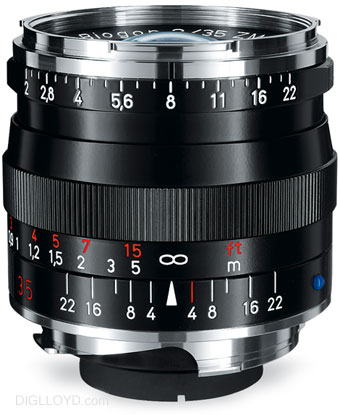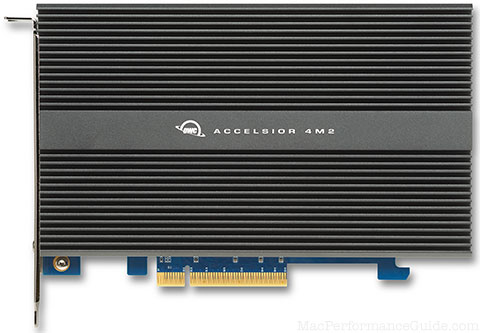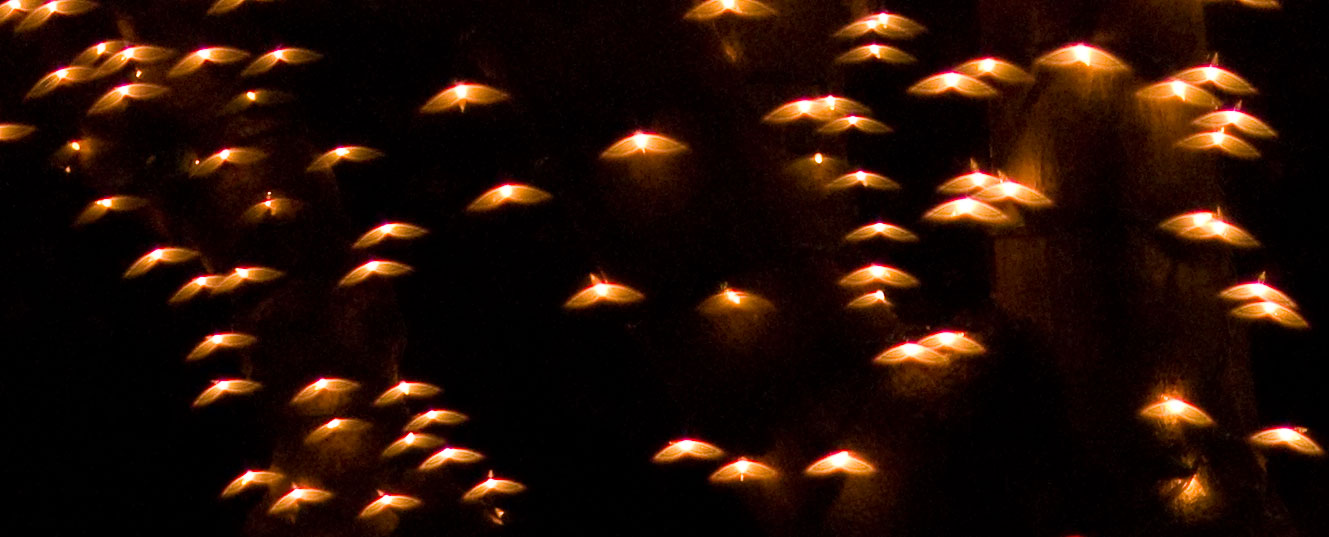
|

$220 SAVE $130 = 37.0% Western Digital 16.0TB Western Digital Ultrastar DC HC550 3.5-in… in Storage: Hard Drives
|

|

|

|

|
Zeiss ZM 35mm f/2 Biogon T*
Related: distortion, ergonomics, Leica, Leica M, optics, Zeiss Biogon, Zeiss Lenses, Zeiss ZM, Zeiss ZM 35mm f/2 Biogon
The Zeiss ZM 35mm f/2 Biogon (about $1005) is inexpensive compared to Leica M alternatives, but a star performer in my field shooting.
The virtually non-existent distortion of the 35/2 Biogon makes it suitable for any technically demanding photography where absolute image integrity is needed, such as architecture, group portraits, etc— anywhere where depicting natural features true-to-life is a priority. To “play” with geometric patterns, a distortion-free lens is a wonderful thing.
I analyze five different 35mm lens choices in detail in my Guide to Leica, explaining the characteristics I’m looking for, and just why I picked the Zeiss ZM 35/2 Biogon before ever shooting the Leica M9. Your choice could be different, but my analysis will surely be helpful. I also include numerous high resolution examples as well as field comparisons with the Leica 35mm f/2 Summicron-M.
Specifications
Per Zeiss. See the datasheet.
| Focal length: | 35mm |
| Aperture scale: | f/2- f/22 |
| Focusing range: | 0.7m - infinity |
| Angular field, diag./horiz./vert | 63/54/38° |
| Coverage at close range: | 43 x 65 cm |
| Image ratio at close range: | 1:18 |
| Number of elements/groups: | 9 elements in 6 groups |
| Filter thread: | M 43 x 0.75 |
| Weight: | 240g |
| Dimensions (with caps): | 56mm long |
Distortion
The distortion-free performance of the ZM 35/2 Biogon alone makes it a must-have lens, it is unique in this respect. Only the barest trace of barrel distortion exists, and unlike the usual nonsense about being indetectable by the human eye, the 35/2 flat-lines right to the corners and is truly as distortion-free as it gets for virtually any lens, let alone a 35mm one.
You won’t find a more distortion-free lens, most macro lenses have more distortion than this! The Leica 35/2 Summicron-M ASPH, described as having “virtually perfect absence of distortion” has about five times greater distortion, hitting nearly 0.9% pincushion distortion in the far corners. The Zeiss 35/2 Biogon has perhaps 0.2% barrel distortion to the extreme corners, very impressive.
The zero distortion means that every image is rendered in a natural and true-to-life fashion. Coupled with very pleasing bokeh and world-class sharpness, the combination is stunning.
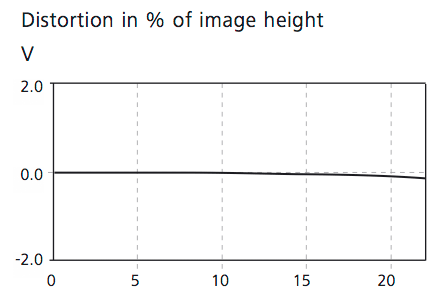
Field experience
After shooting the 35/2 Biogon on the Leica M9 for a while in the mountains and fields and streams and city, I could have found that my analysis did not pan out in the field, but the 35/2 Biogon did not let me down, and sits at the very top of my list for a variety of reasons (not all of which are detailed here, but all of which are detailed in my Guide to Leica).
Ergonomics and build quality
The ergonomics are superb, and I rate the ZM 35/2 ergonomics as better than Leica M lenses: focus damping, aperture and focus ring size and placement, etc.
After using about 10 different lenses on the M9, this lens remains my all-time favorite; it has an ideal size, perfect focus damping and just the right placement of focusing ring and aperture ring (for my hands).
The 35mm focal length is also just about perfect for a rangefinder; 28mm frame lines are uncomfortably wide, and 50mm frame walls trend to “porthole” effect.
Don’t let internet loud-mouths spouting bar-talk tell you that Zeiss ZM build quality is somehow inferior to Leica’s. The build quality is outstanding, and beautiful too.
Aperture ring
The 1/3 stop click stops feel fantastic, and they are easy to see. I love this aspect of the ZM line, and it’s practical too: it allows fine-tuning exposure to 1/3 stop, something that can be of use with digital (expose to the right). Look at how clear and well marked they are on the outside barrel of the lens, nicely done.
I hugely prefer this arrangement over the too-compact Leica designs, it’s less error prone since the aperture ring is well separated from the generous focusing ring, helping to eliminate casual errors, which I constantly encountered with the Leica 50mm f/0.95 Noctilux-M ASPH. I confess to irritation that Leica tradition trumps good ergonomics; it need not be.
Focusing
I found it easy to focus the ZM 35/2 accurately using the rangefinder, which is not to say it’s better than the Leica 35/2, just that both are well-matched to the M9.
My eye exam shows that I have very low astigmatism (1/4 diopter or so), and 20/20 vision with contacts. If you have a lot of astigmatism or poor vision, forget about a rangefinder and stick with autofocus. That’s a real issue, so pay attention.
Image quality
During my testing of the Leica M9 for my review, I shot the ZM 35/2 more than any other lens on the M9, and for good reason: it delivers, it’s easy to shoot, it’s perfect.
My field shooting is in strong agreement with the exemplary MTF chart: although the edges and corners are a slightly weak at f/5.6 (slightly better at f/8), the color, brilliance and stunning detail make this lens a winner.
In fact, for landscape shooting with my three head-to-head comparisons (see Guide to Leica), it outmatched far more expensive Leica 35/2 Summicron-M ASPH. This was quite a surprise, but really not so surprising when the MTF charts are compared: the two lenses are designed for entirely different purposes, the Leica 35/2 having notable field curvature. Then again, with a rangefinder, one simply cannot match focus accurately enough for fair comparison, therefore it all comes down to what you can actually achieve with a particular lens on a particular camera. Field curvature is image quality death on a perfectly flat digital sensor, at least on planar subjects (eg infinity focus).
I noted the aberration seen below at night with the 35/2 Biogon at wider apertures. In this respect the Leica 35/2 Summicron-M ASPH is clearly better corrected, and a better choice for night shooting in the f/2 - f/2.8 range. Such aberrations are a fact of optical life with wide angle lenses, but it makes the Biogon less well suited to shooting wide open at night, because points of lights become smeared. Stopping down to f/5.6 all but eliminates the issue (but that is self-defeating at night). However, landscape shooting showed no disadvantage compared to the Leica 35/2 Summicron-M ASPH, so this shortcoming must be kept in perspective. Also, the spherical design of the 35/2 Biogon mean very pleasing bokeh.
I’m told by Brian Caldwell, designer of the stellar Coastal Optics 60/4 UV-VIS-IR APO Macro, that the effect seen here is sagittal oblique spherical aberration. Every lens has faults, but I’m willing to forgive this one given the outstanding performance in general.
Examples
The images below are presented at much larger sizes in Guide to Leica.

This image below presents better at a larger size (in my full review). It is extremely detailed, in spite of the awful low-contrast blue light deep in Lee Vining canyon.
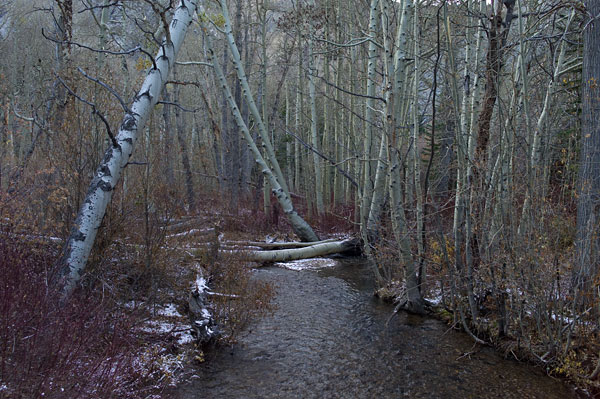
Off-center color and vignetting
Setting Lens Detection to either Leica 35/2 setting provides a uniform frame both in terms of illumination and color shading.
Conclusions
The bottom line is that the 35/2 Biogon is unequivocally the very first lens I’m buying for the Leica M9. It just “fits” in so many ways. It’s a no-brainer for any M shooter.
The only real downside is having to choose a lens setting on the M9, for lens correction purposes. The Leica 6-bit coded lenses are detected automatically.
Value is incredible— at 1/2 the price of the Leica 35/2 Summicron-M ASPH, you can afford two more Zeiss ZM lenses for your M9.
Seagate 22TB IronWolf Pro 7200 rpm SATA III 3.5" Internal NAS HDD (CMR)
SAVE $100
















